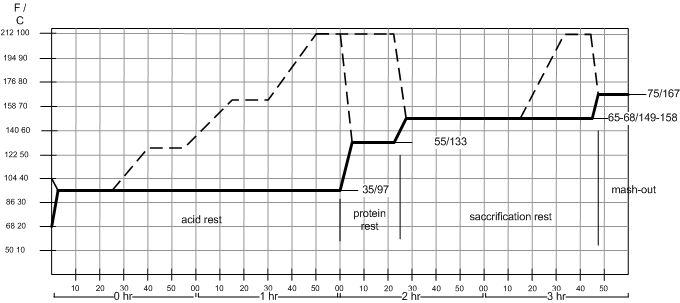stoutaholic
Well-Known Member
Is there any point of performing a multi-step mash if the steps are all within the saccharification range? I can understand the desire to a do a protein rest in the 120s and 130s, but is there any advantage to doing a step mash from, say, 140 F to 158 F?
It seems like the same effect would be obtained by choosing an isothermal mash at a temperature somewhere in-between those two temps. Is that correct, or is there some synergistic effect that I am not considering?
In other words, you either want to produce a wort that is on the more dextrinous side or the more fermentable side, or is balanced between the two. If you are shooting for a more detrinous wort (i.e. with a higher proportion of unfermentable sugars), you would choose an isothermal mash towards the higher end of the range -- say 158 F. If you want a more fermentable wort, you would choose an isothermal mash towards the lower end -- say 150 F. If you wanted a balanced wort, you might use 154 F. Would there be any point then, in starting a mash at say 146 and then stepping to 158? It seems like this would just produce the same wort that you would have achieved if you had chosen to mash at somewhere around 154, for example, but your mash would be less repeatable due to the variables involved in stepping.
It seems like the same effect would be obtained by choosing an isothermal mash at a temperature somewhere in-between those two temps. Is that correct, or is there some synergistic effect that I am not considering?
In other words, you either want to produce a wort that is on the more dextrinous side or the more fermentable side, or is balanced between the two. If you are shooting for a more detrinous wort (i.e. with a higher proportion of unfermentable sugars), you would choose an isothermal mash towards the higher end of the range -- say 158 F. If you want a more fermentable wort, you would choose an isothermal mash towards the lower end -- say 150 F. If you wanted a balanced wort, you might use 154 F. Would there be any point then, in starting a mash at say 146 and then stepping to 158? It seems like this would just produce the same wort that you would have achieved if you had chosen to mash at somewhere around 154, for example, but your mash would be less repeatable due to the variables involved in stepping.


